Baleen whales (Mysticeti) are a group of marine mammals belonging to the order Cetacea. They span three families (Balaenidae, Balaenopteridae, and Eschrichtiidae) across four genera containing 14 species. These whales are called baleen whales because instead of teeth they have comb-like structures called baleen plates. They use their baleen plates to filter out tiny organisms, such as krill and plankton, from the water as they feed. Baleen whales are some of the largest animals on the planet, with adult individuals ranging from 33 feet (10 meters) to over 98 feet (30 meters) in length!
Scientific Name
Mysticeti comes from the Greek word mystax, which means mustache, and ketos, meaning whale. Baleen whales are sometimes referred to as mustache whales because of the long, bristly plates of baleen that hang from their upper jaws. The baleen plates give the whale’s upper jaw a distinctive appearance, resembling a bristly mustache, which is why they are sometimes called mustache whales.

©alexander hauke/Shutterstock.com
Baleen Plates
Baleen plates are made of a flexible material called keratin, similar to human hair and nails. The plates of baleen are used by the whales to filter small prey, such as krill or plankton, from the water as they swim with their mouths open. The baleen plates form a dense mat that acts like a sieve, allowing the whales to strain large volumes of water and capture the small prey within it.
The number of baleen plates in baleen whales varies depending on the species and the size of the individual. Baleen whales have hundreds of baleen plates on each side of their mouth, arranged in a row that can be up to several meters long. Humpback whales can have as many as 400 baleen plates on each side of their mouth, while blue whales have up to 800 baleen plates on each side. Smaller species like the minke whale have between 230-360.
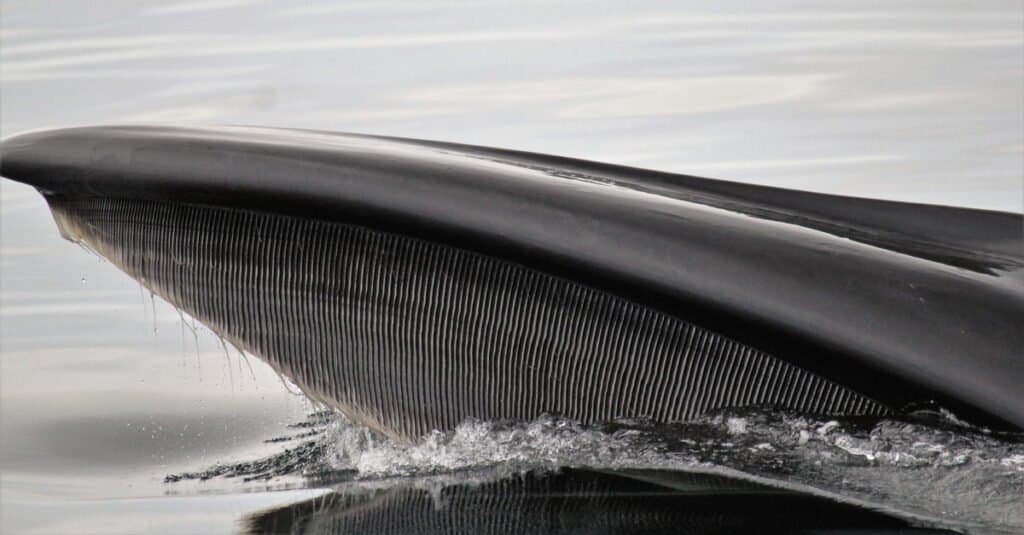
©Sharlyn/Shutterstock.com
Vocalizations
Baleen whales produce a wide variety of vocalizations. Baleen whales produce low-frequency calls and songs that can travel for long distances underwater and are used for communication and mating. Humpback whales are famous for the complex and elaborate songs that they use during mating season. These whales also produce various other vocalizations, such as grunts, moans, and whistles, that are used for social communication and navigation.
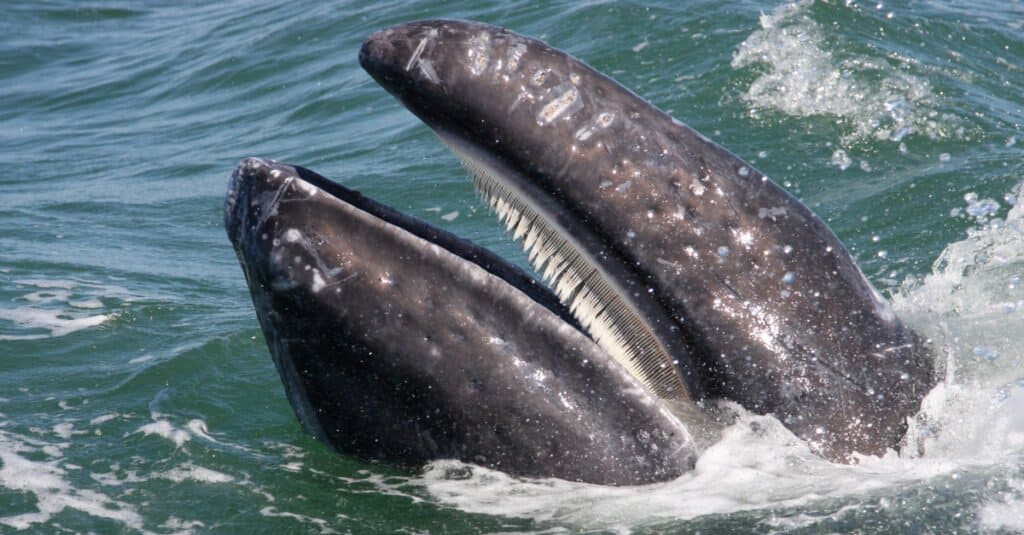
©jo Crebbin/Shutterstock.com
Baleen Whale Families
There are three extant families of baleen whales: Balaenidae, Balaenopteridae, and Eschrichtiidae. Baleenidae includes some of the largest baleen whales, which tend to have stocky bodies and rounded dorsal fins. Balaenopteridae is the largest family of baleen whales and includes the rorqual whales, which have elongated bodies and throat pleats that allow them to expand their mouths when feeding. Eschrichtiidae is a monotypic family, containing one extant species, the gray whale.
Balaenidae
Balaenidae is a family of baleen whales that contains two genera, Balaena and Eubalaena. Balaena contains only one extant (not extinct) species, the bowhead whale, while Eubalaena includes three extant species: the North Atlantic right whale, the North Pacific right whale, and the Southern right whale. Members of Balaenidae tend to have a stocky build, rounded dorsal fins, and a distinctive arch in their skulls. They are also known for their migratory patterns, often traveling between their summer feeding grounds in colder waters and winter breeding grounds in warmer waters. Despite once being heavily hunted for their blubber, meat, and baleen, populations of Balaenidae species have rebounded in some areas, although they remain vulnerable to threats such as climate change, habitat destruction, and entanglement in fishing gear.
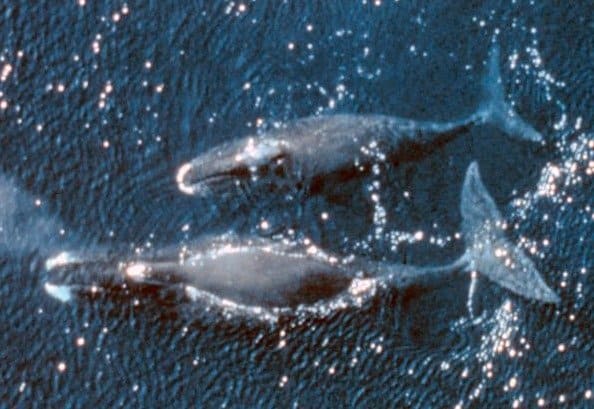
©NOAA Photo Library / public domain – License
Balaena
The bowhead whale (Balaena mysticetus) is the sole extant (existing) species of this monotypic genus. The bowhead is a large baleen whale that is found in Arctic and subarctic waters. Bowheads have the thickest blubber of any whale: up to 20 inches (50 cm) thick. It is also recognized by its massive head, which can make up about a third of its body length. Bowhead whales can reach lengths of up to 60 feet (18 m) and weigh as much as 120,000 pounds (54,500 kg).
They have a stocky build, a rounded dorsal fin, and no throat pleats, which distinguishes them from other baleen whales. Bowhead whales are also known for their unique vocalizations, which include moans, groans, and chirps. Despite once being heavily hunted for their blubber and meat, bowhead whale populations have rebounded due to conservation efforts. They remain, however, vulnerable to threats such as climate change, habitat destruction, and noise pollution.
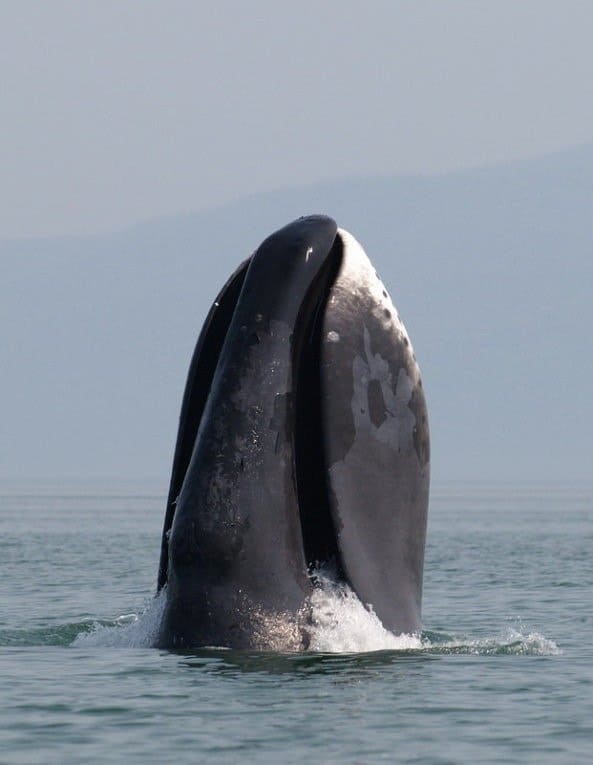
©Olga Shpak / CC BY-SA 3.0, via Wikimedia Commons – License
Eubalaena
The genus Eubalaena includes three species: the North Atlantic right whale (Eubalaena glacialis), the North Pacific right whale (Eubalaena japonica), and the Southern right whale (Eubalaena australis). These whales are called right whales because they were the right whales for whalers to hunt – they were slow-moving and floated when killed, making them easy to catch and process. Today, all three species are considered endangered due to centuries of whaling, habitat loss, and other human activities.
The North Atlantic right whale is found in the waters of the Western North Atlantic Ocean, from the Southeastern coast of the United States up to the Gulf of St. Lawrence in Canada. The North Pacific right whale is found in the Northern Pacific Ocean, from the Bering Sea to the Sea of Japan. The Southern right whale is found in the Southern hemisphere, in the waters of the Southern Atlantic, Indian, and Pacific Oceans. While their ranges overlap somewhat, these species generally do not interbreed and are considered distinct from one another.

©Foto 4440/Shutterstock.com
Eubalaena Appearance
Right whales are among the largest whales, with adult males reaching lengths of up to 59 feet (18 m) and females reaching lengths of up to 66 feet (20 m). Right whales weigh between 44,000 – 180,000 pounds (20 -82 tons) depending on the species. They have stocky bodies with large, round heads. They lack a dorsal fin and instead have a series of raised bumps or callosities on their heads. Rights are mostly black or dark grey in color, with occasional white patches on their bellies and chins. Their flippers are broad and paddle-shaped, measuring up to one-third of their body length. Their tail, or fluke, is wide and paddle-shaped, with a smooth trailing edge. They have two blowholes, located on the top of their head, which they use to exhale and inhale air when they surface.
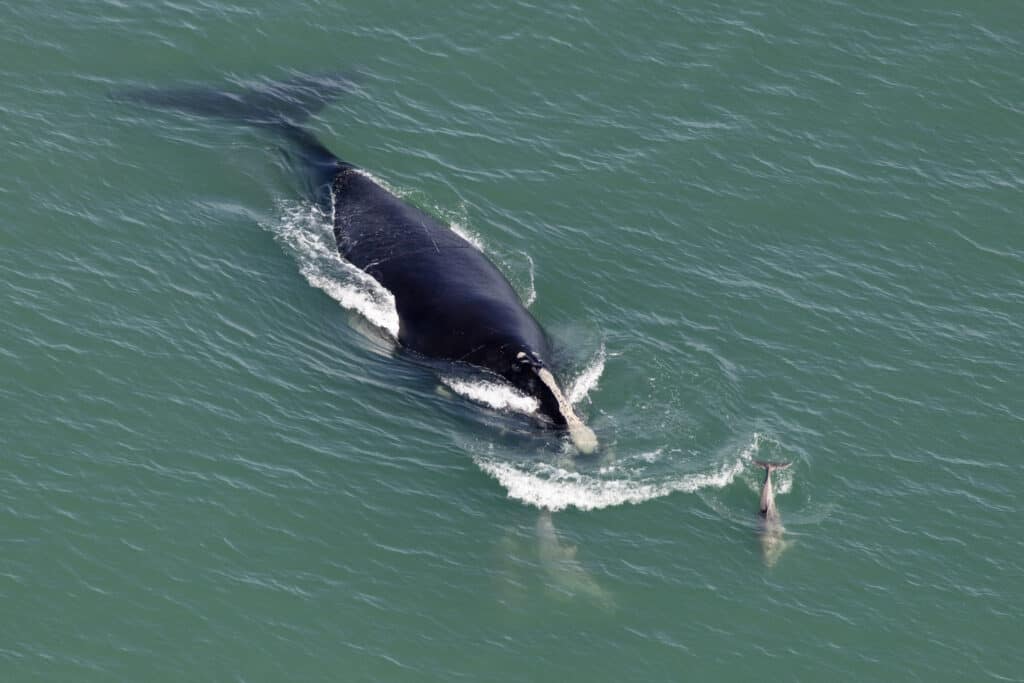
©iStock.com/6381380
Eubalaena Communication
Right whales are highly vocal animals, producing a wide range of sounds for communication, navigation, and social interactions. Their vocalizations can be heard over long distances underwater and are often used for communication between individuals or groups of whales. They communicate with low-frequency moans, groans, and grunts, as well as higher-frequency chirps, squeaks, and screams. Research has determined that the vocalizations of right whales can convey important information about their age, sex, reproductive status, and social relationships.
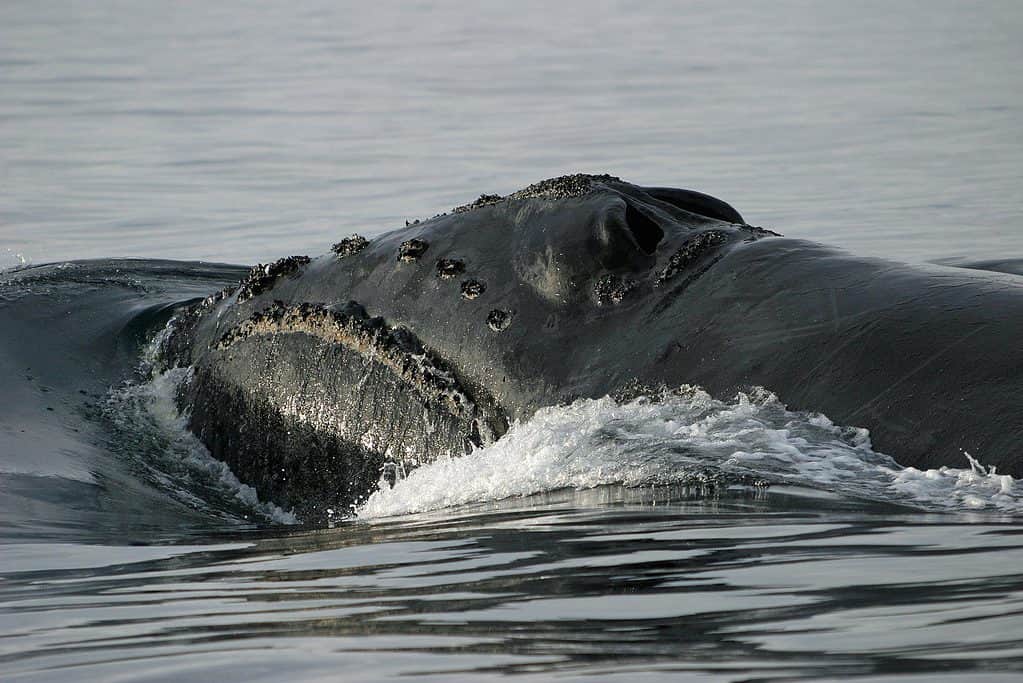
©https://ift.tt/Uahbt3u – License
Balaenopteridae
There are eight extant species in the family Balaenopteridae contained in two genera, Balaenoptera and Megaptera. Balaenopteridae species are generally characterized by their elongated bodies and long, narrow jaws with throat pleats that allow them to expand their mouths when feeding. They are found in all of the world’s oceans and undertake some of the longest migrations of any mammal, traveling thousands of miles between their summer feeding grounds in colder waters and winter breeding grounds in warmer waters. Despite conservation efforts, many Balaenopteridae species are still threatened by human activities such as whaling, habitat destruction, and climate change.
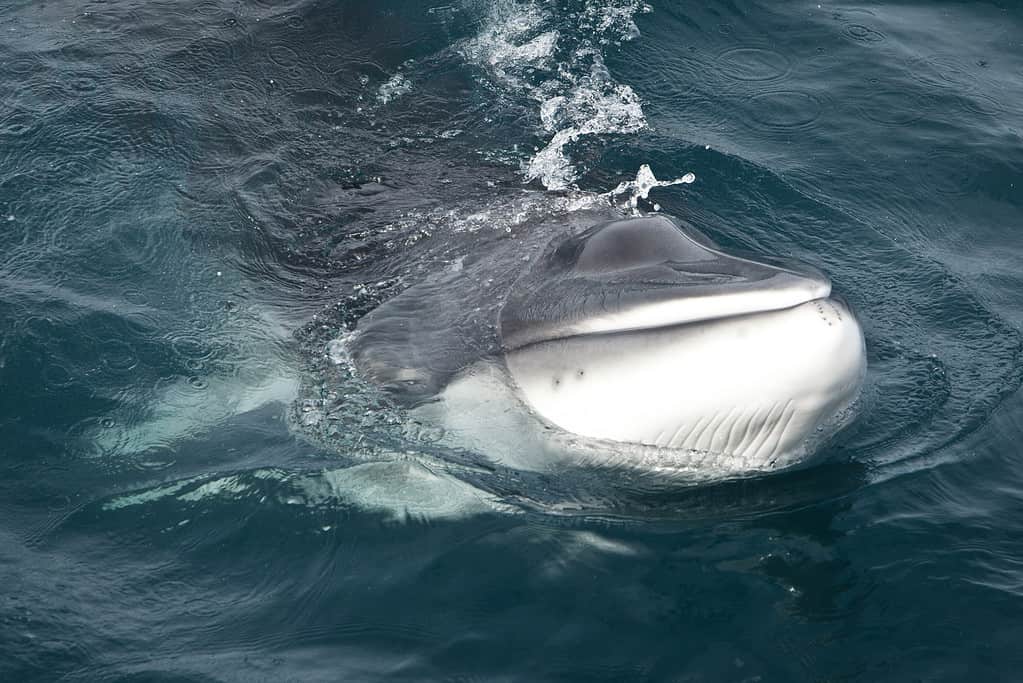
©Tim Watters/Shutterstock.com
Balaenopteridae: Key Characteristics
The Balaenopteridae family, also called rorqual whales, includes some of the largest animals on Earth. Besides their enormous size and the presence of baleen plates, key characteristics of rorqual whales include:
- Throat pleats: Balaenopteridae whales have long grooves, known as throat pleats, that run from their lower jaw to their belly. These pleats expand when the whale takes in water during feeding, allowing them to swallow large amounts of food at once.
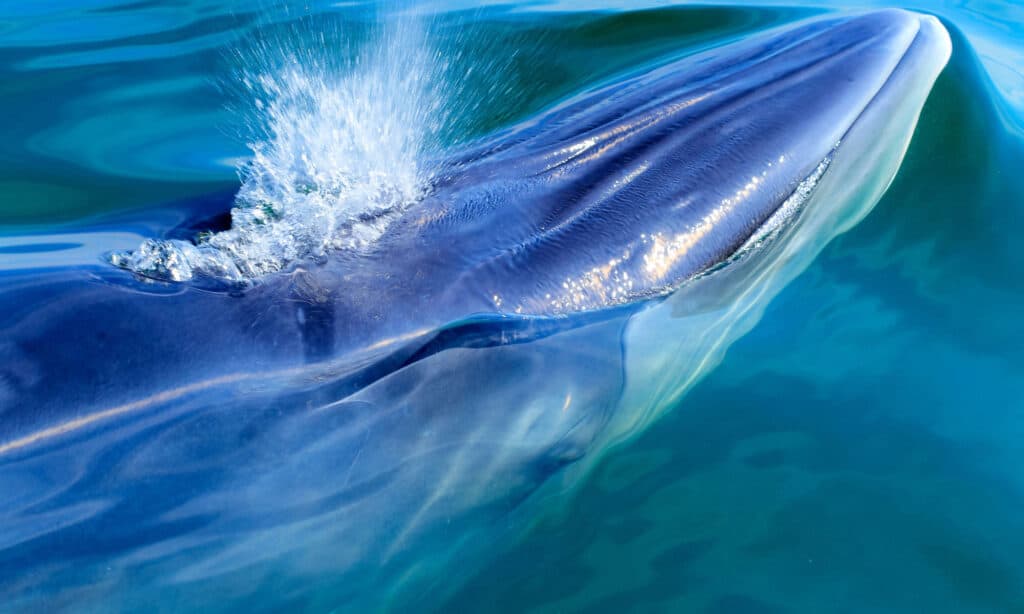
©somsak nitimongkolchai/Shutterstock.com
- Long and slender bodies: These whales have long and slender bodies that are designed for efficient swimming and diving.
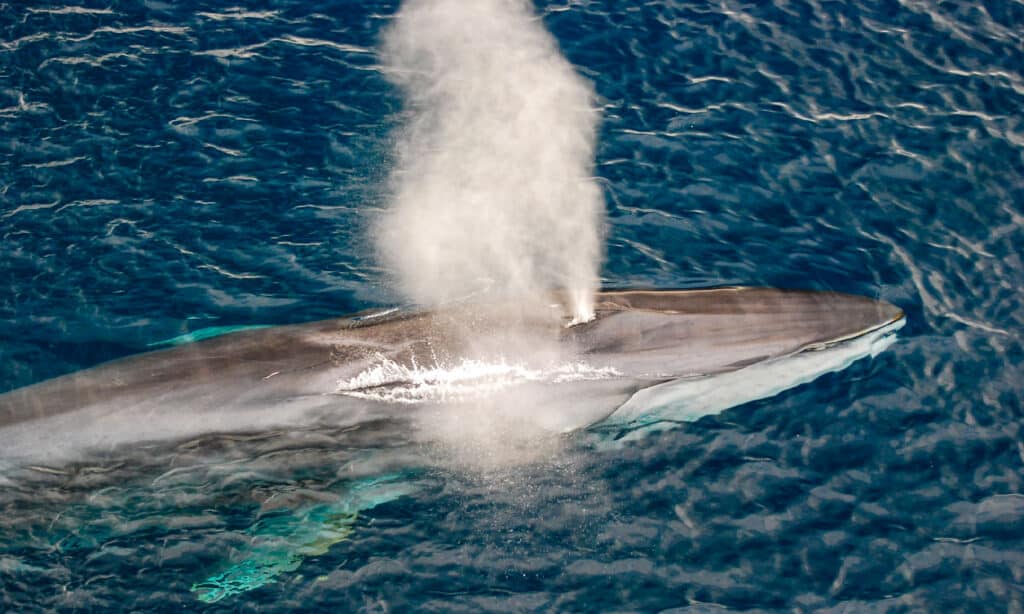
©iStock.com/JG1153
- Dorsal fin: Balaenopteridae has a very small dorsal fin located on their backs that helps them maintain stability while swimming.
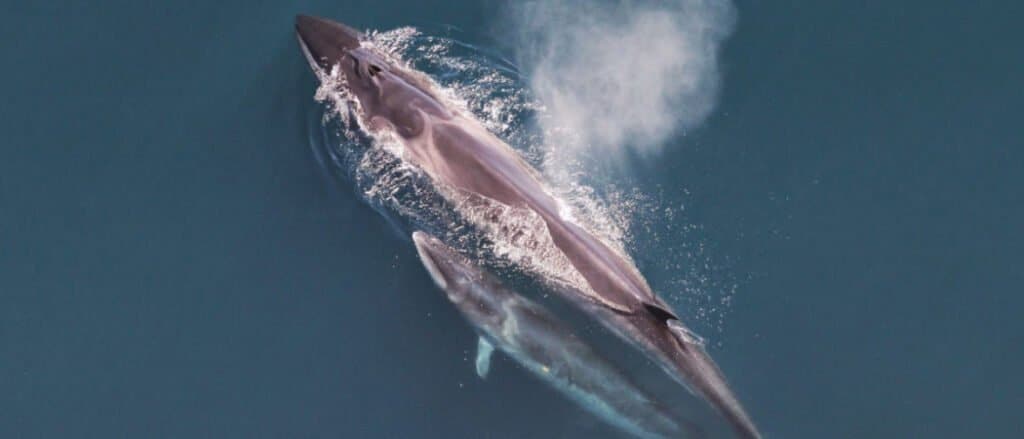
- Migration: Many species in this family undertake long migrations each year between their breeding and feeding grounds.
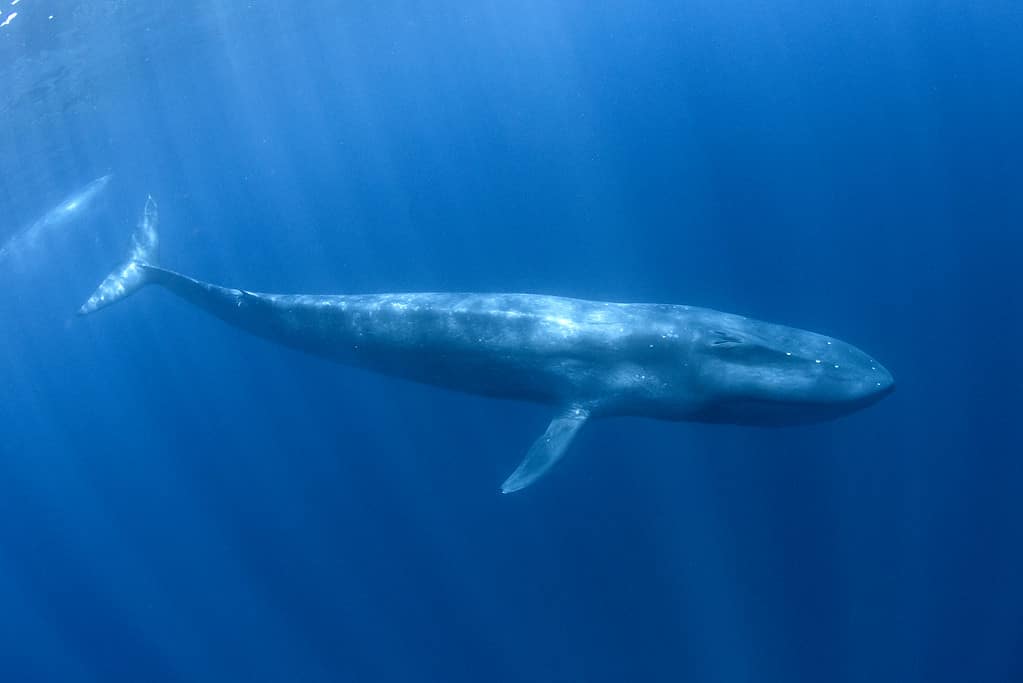
©Rich Carey/Shutterstock.com
- Social behavior: Balaenopteridae whales are highly social and are known for their complex communication and vocalizations, including songs sung by male humpback whales during mating season.
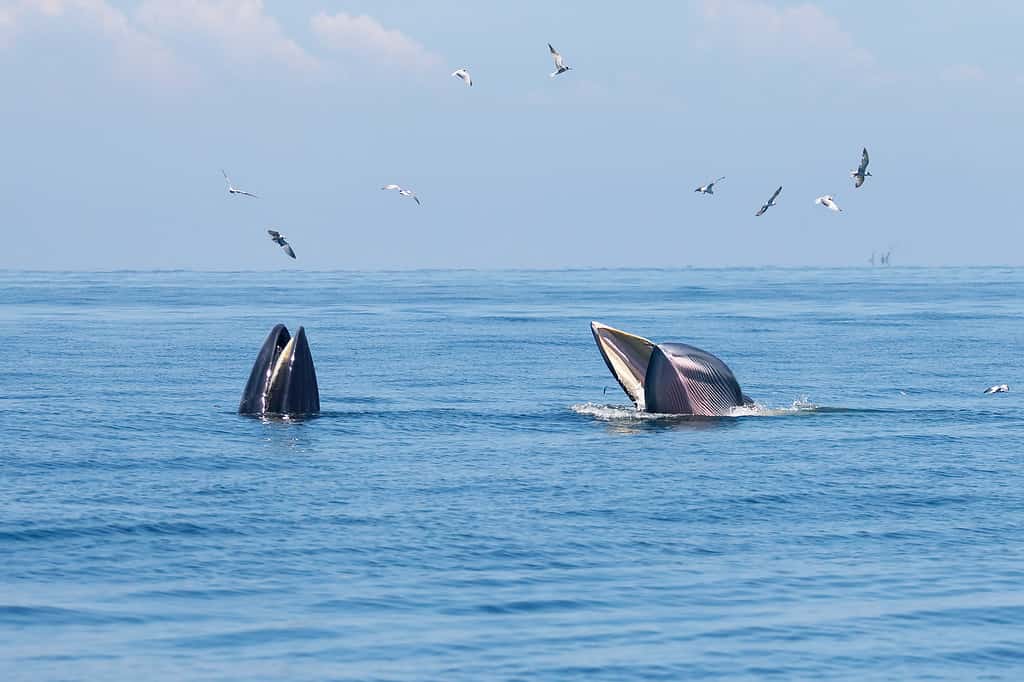
©assoonas/Shutterstock.com
Balaenoptera
The genus Balaenoptera contains eight distinct species:
- Antarctic minke whale (Balaenoptera bonaerensis)
- Blue whale (Balaenoptera musculus)
- Bryde’s whale (Balaenoptera brydei)
- Fin whale (Balaenoptera physalus)
- Dwarf minke whale (Balaenoptera acutorostrata)
- Omura’s whale (Balaenoptera omurai)
- Rice’s whale (Balaenoptera ricei)
- Sei whale (Balaenoptera boreali)
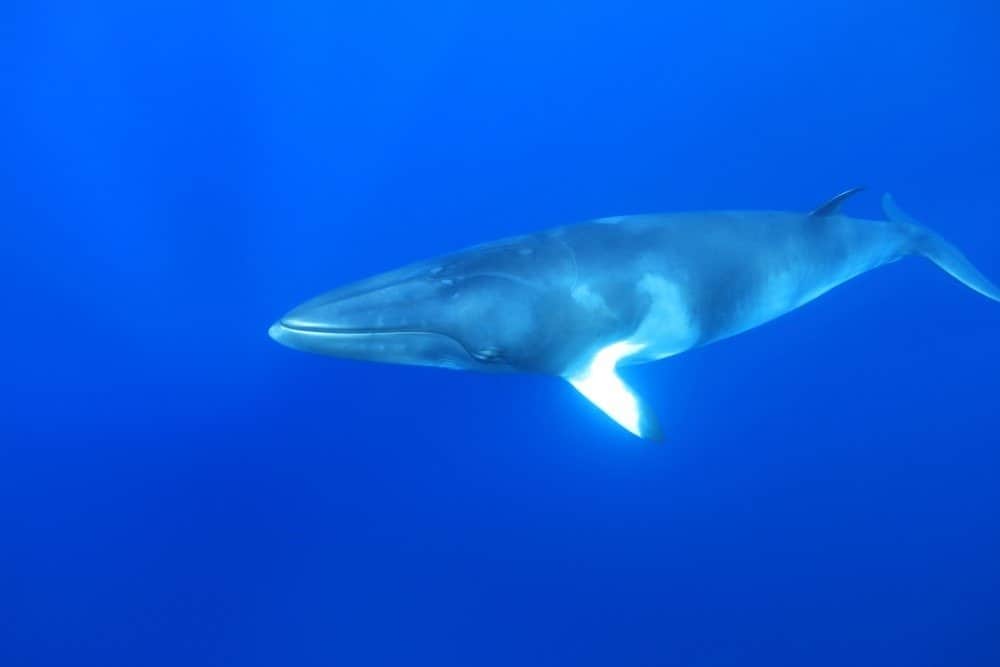
©aquapix/Shutterstock.com
and five subspecies:
- Northern blue whale (Balaenoptera musculus musculus)
- Antarctic blue whale (Balaenoptera musculus intermedia)
- Northern Indian ocean blue whale (Balaenoptera musculus indica)
- pygmy blue whale (Balaenoptera musculus brevicauda)
- Eden’s whale (Balaenoptera edeni)
Megaptera
Humpback whales (Megaptera novaeangliae) are one of the most recognizable and widely-studied species of baleen whales. They are known for their large size, reaching lengths of up to 52 feet (16 m) and weights of up to 79,000 pounds (39 tons). Humpback whales have a distinctive appearance, with long, narrow pectoral fins that can reach up to one-third of their body length, a knobbly head, and a white underbelly. They are found in all major oceans around the world, with populations in the North Pacific, North Atlantic, Southern Ocean, and Indian Ocean.
Though the genus Megaptera is presently (2023) considered monotypic, there is extensive evidence supporting at least three subspecies: North Atlantic, North Pacific, and Southern Indian. Humpback whales are migratory, with most populations traveling long distances between their summer feeding grounds in colder waters and their winter breeding grounds in warmer waters. They are recognized for the haunting songs sung by males during mating season.
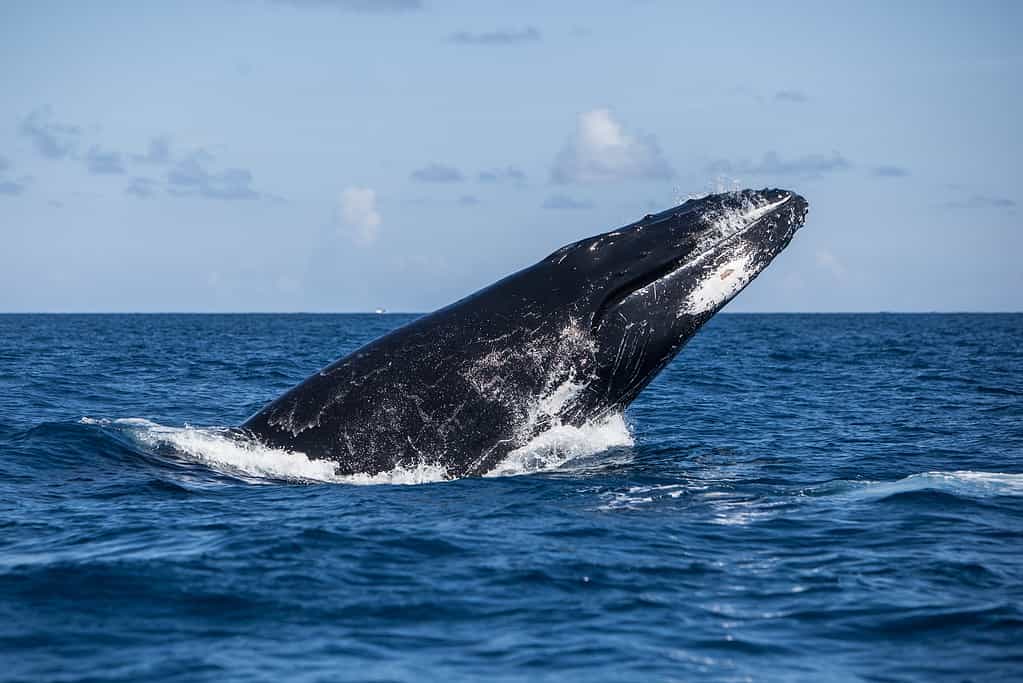
©Ethan Daniels/Shutterstock.com
Eschrichtiidae
Eschrichtius robustus, commonly known as the gray whale, is the only extant (not extinct) species of the family Eschrichtius. It is a medium-sized whale, reaching up to 49 feet (15 m) in length and weighing up to 90,000 pounds (40 tons). Gray whales have streamlined bodies with small dorsal fins and no true teeth. Instead, gray whales filter their food using baleen plates They are typically gray in color, with patches of white barnacles and whale lice on their skin.

©Jan-Dirk Hansen/Shutterstock.com
Gray whales travel up to 12,000 miles (19,000 km) round trip between their winter breeding grounds in Baja California, Mexico, and their summer feeding grounds in the Bering and Chukchi Seas. They feed on bottom-dwelling organisms such as amphipods and small crustaceans, which they filter from the ocean floor using their baleen plates. Despite being hunted to near-extinction in the past, the gray whale population in the North Pacific is now relatively healthy, although they still face threats from climate change, habitat destruction, and human activities such as oil and gas exploration.
The post Types of Baleen Whales: Every Species of Baleen Whale in the World appeared first on AZ Animals.
from Animal News, Facts, Rankings, and More! - AZ Animals https://ift.tt/s6pXhBS